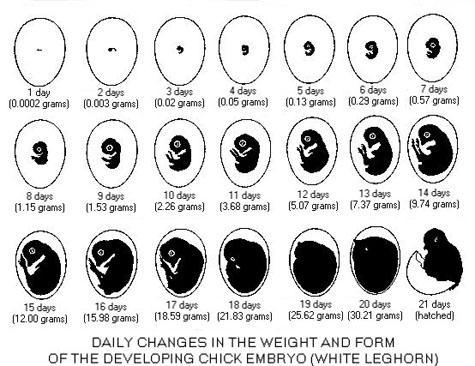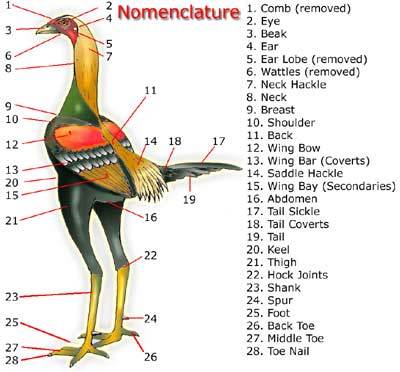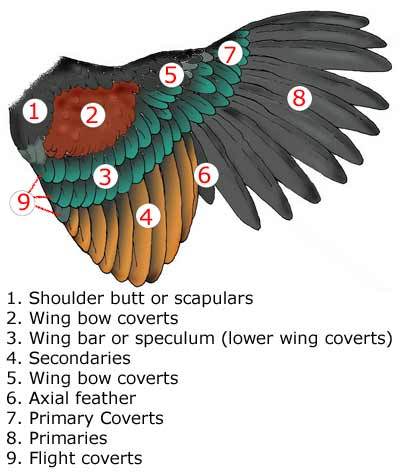HOW TO PRODUCE NON-FADING RHODE ISLAND REDS
IT IS THE WRITER'S OPINION THAT EXTREME MATINGS HAVE DONE MUCH TO CAUSE WEAKNESS IN
UNDER COLOR OF FEMALES-ADVISES THE USE OF GOOD LAYERS WHICH HOLD THEIR COLOR WELL
C. L. BUSCHMANN
 1911
1911
The Only objection that we have ever had to the Rhode Island Red was the fading of the color of the female after it had passed the pullet age. There is apparently no reason for this and it is
difficult to account for. Brown Leghorns do not fade nor do black hens; why should Reds? When we stop to consider that a red cow or a bay horse holds its color why should not a Rhode Island Red hen hold hers? Any live stock turned out in the hot sun during the summer months will get sunburnt, which slightly changes the color, but they always shed this coat and their natural color returns In winter.
When we first discovered that several hens two years old in our flock of Reds had held their color, the thought came to us that it was possible to build a strain of nonfading Rhode Island Reds, so we began to experiment and observe. The second observation was that some of the chicks from these hens held their color also, so we commenced to breed for this particular feature and have built
up our non-fading strain practically from a few hens, but it has taken much time and careful study. The males usually held their color and by introducing the new blood through a female bred to our best male and then using the young cockerels of fifty per cent original stock, we kept the strong male line intact and continued breeding from the same hens and pullets.
Size, shape, color and laying qualities are always considerations of the first importance. We now have a hundred or more birds that have held their color, only changing a little during the burning summer days and under the heavy laying strain of our breeding season. They always return to their natural color after moulting and we believe in a few more years that we shall be able to raise practically all of
our birds so that they will be non-fading. We are careful at all times not to breed females which show signs of not holding their color and which are not laying properly. These hens are sold for market purposes and not sent to some other breeder. Right here we might mention that a five or ten dollar bird is often eaten rather than sold at a fair price, because she would make a poor advertisement when pointed out, in some ones' yards as a "Buschmann Non-Fader." After the Chicago show, December 1909, we had the pleasure of traveling to New York with the late Mr. Tuttle and Mr. Coffin, secretary of the R. I. Red Club of America. Mr. Coffin told us he had a hen several years old that looked
like a pullet and that other breeders also had a few but they apparently never thought of building up a non-fading strain. This is one of the side-lights on the Non-Fading Rhode Island Reds, never before published. While we do not claim that every bird of the twenty-five hundred we are raising this season will be non-fading, we know a large per cent of them will be. We are satisfied that we are on the right road and in a few more years will be able to accomplish that which so many breeders thought impossible. With this accomplished, the Rhode Island Reds will be in a class by themselves, as the greatest fowl in the world. One of the reasons that so many Reds fade is because the majority of the Red breeders have resorted to extreme matings, breeding a very dark male with exceedingly light
females, or breeding dark males and females together, such as those that have been winning in many eastern shows. These birds are much nearer brown or mahogany in color, than brilliant red. A bird of this description bred to a lighter bird is sure to produce birds that will not hold their color; many of them will be mealy, shafty and mottled, giving the bird a very undesirable and unsightly appearance.
Through careful selections and correct matings we have accomplished what no other breeder has done, i. e., produced males and females of a brilliant, even color in their pullet and cockerel age that held that same beautiful color when they reach matured age as hens and cocks. This has been more or less a tedious and hard undertaking and unless one feels that he can put in four or five
years along this line, he need not expect to accomplish the same results. Many Rhode Island Red breeders said the Reds could not be bred so that they would not fade, because they had been unable to do it. When we exhibited at Chicago, Kansas City and Indianapolis, as well as other shows during the past season, hens that were four, three and two years old respectively, and that had the same color that a pullet had; the breeders all began " to sit up and take notice" and wanted to know how we had accomplished this. We have many hens in our breeding yards at this date, May first, 1910, after a hard laying season of over three or four months, that are practically the same color they were after molting last fall. We hope to retain all of our two, three and four year old hens for next season's breeding as well as the choicest pullets that we have now in our breeding yards. We have been offered some fabulous prices for some of our best stock at different times, but we wisely kept them and by so doing we feel that in a few more years our Non- Fading strain will be perfected and will make the Rhode Island Red one of America's foremost fowls.
Chris
IT IS THE WRITER'S OPINION THAT EXTREME MATINGS HAVE DONE MUCH TO CAUSE WEAKNESS IN
UNDER COLOR OF FEMALES-ADVISES THE USE OF GOOD LAYERS WHICH HOLD THEIR COLOR WELL
C. L. BUSCHMANN

The Only objection that we have ever had to the Rhode Island Red was the fading of the color of the female after it had passed the pullet age. There is apparently no reason for this and it is
difficult to account for. Brown Leghorns do not fade nor do black hens; why should Reds? When we stop to consider that a red cow or a bay horse holds its color why should not a Rhode Island Red hen hold hers? Any live stock turned out in the hot sun during the summer months will get sunburnt, which slightly changes the color, but they always shed this coat and their natural color returns In winter.
When we first discovered that several hens two years old in our flock of Reds had held their color, the thought came to us that it was possible to build a strain of nonfading Rhode Island Reds, so we began to experiment and observe. The second observation was that some of the chicks from these hens held their color also, so we commenced to breed for this particular feature and have built
up our non-fading strain practically from a few hens, but it has taken much time and careful study. The males usually held their color and by introducing the new blood through a female bred to our best male and then using the young cockerels of fifty per cent original stock, we kept the strong male line intact and continued breeding from the same hens and pullets.
Size, shape, color and laying qualities are always considerations of the first importance. We now have a hundred or more birds that have held their color, only changing a little during the burning summer days and under the heavy laying strain of our breeding season. They always return to their natural color after moulting and we believe in a few more years that we shall be able to raise practically all of
our birds so that they will be non-fading. We are careful at all times not to breed females which show signs of not holding their color and which are not laying properly. These hens are sold for market purposes and not sent to some other breeder. Right here we might mention that a five or ten dollar bird is often eaten rather than sold at a fair price, because she would make a poor advertisement when pointed out, in some ones' yards as a "Buschmann Non-Fader." After the Chicago show, December 1909, we had the pleasure of traveling to New York with the late Mr. Tuttle and Mr. Coffin, secretary of the R. I. Red Club of America. Mr. Coffin told us he had a hen several years old that looked
like a pullet and that other breeders also had a few but they apparently never thought of building up a non-fading strain. This is one of the side-lights on the Non-Fading Rhode Island Reds, never before published. While we do not claim that every bird of the twenty-five hundred we are raising this season will be non-fading, we know a large per cent of them will be. We are satisfied that we are on the right road and in a few more years will be able to accomplish that which so many breeders thought impossible. With this accomplished, the Rhode Island Reds will be in a class by themselves, as the greatest fowl in the world. One of the reasons that so many Reds fade is because the majority of the Red breeders have resorted to extreme matings, breeding a very dark male with exceedingly light
females, or breeding dark males and females together, such as those that have been winning in many eastern shows. These birds are much nearer brown or mahogany in color, than brilliant red. A bird of this description bred to a lighter bird is sure to produce birds that will not hold their color; many of them will be mealy, shafty and mottled, giving the bird a very undesirable and unsightly appearance.
Through careful selections and correct matings we have accomplished what no other breeder has done, i. e., produced males and females of a brilliant, even color in their pullet and cockerel age that held that same beautiful color when they reach matured age as hens and cocks. This has been more or less a tedious and hard undertaking and unless one feels that he can put in four or five
years along this line, he need not expect to accomplish the same results. Many Rhode Island Red breeders said the Reds could not be bred so that they would not fade, because they had been unable to do it. When we exhibited at Chicago, Kansas City and Indianapolis, as well as other shows during the past season, hens that were four, three and two years old respectively, and that had the same color that a pullet had; the breeders all began " to sit up and take notice" and wanted to know how we had accomplished this. We have many hens in our breeding yards at this date, May first, 1910, after a hard laying season of over three or four months, that are practically the same color they were after molting last fall. We hope to retain all of our two, three and four year old hens for next season's breeding as well as the choicest pullets that we have now in our breeding yards. We have been offered some fabulous prices for some of our best stock at different times, but we wisely kept them and by so doing we feel that in a few more years our Non- Fading strain will be perfected and will make the Rhode Island Red one of America's foremost fowls.
Chris









